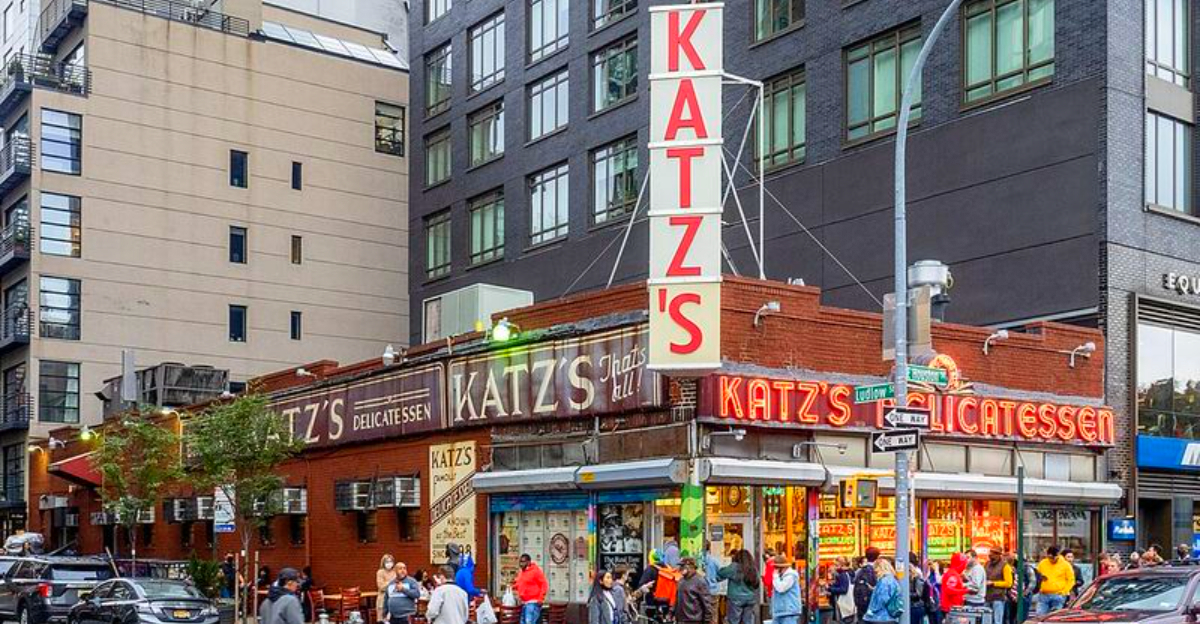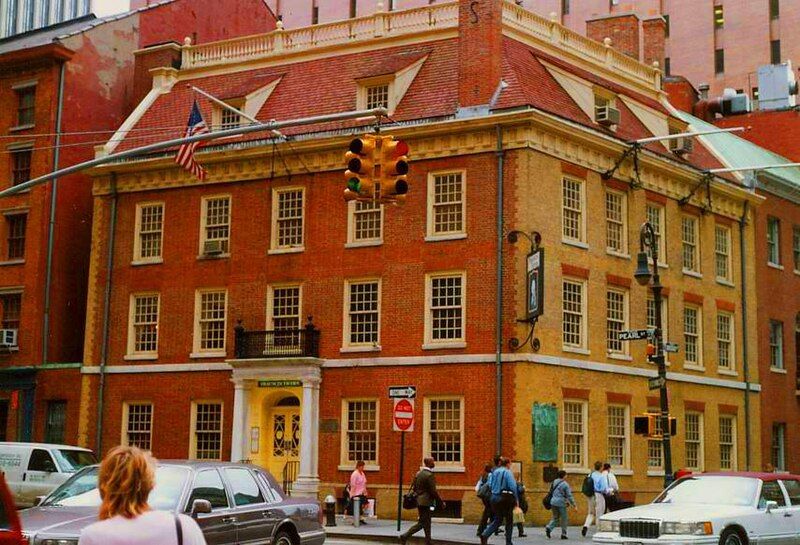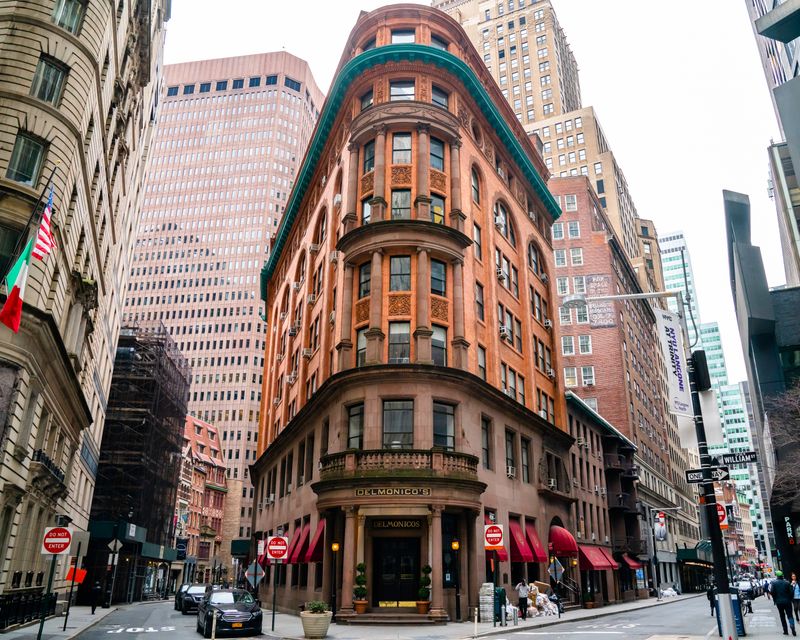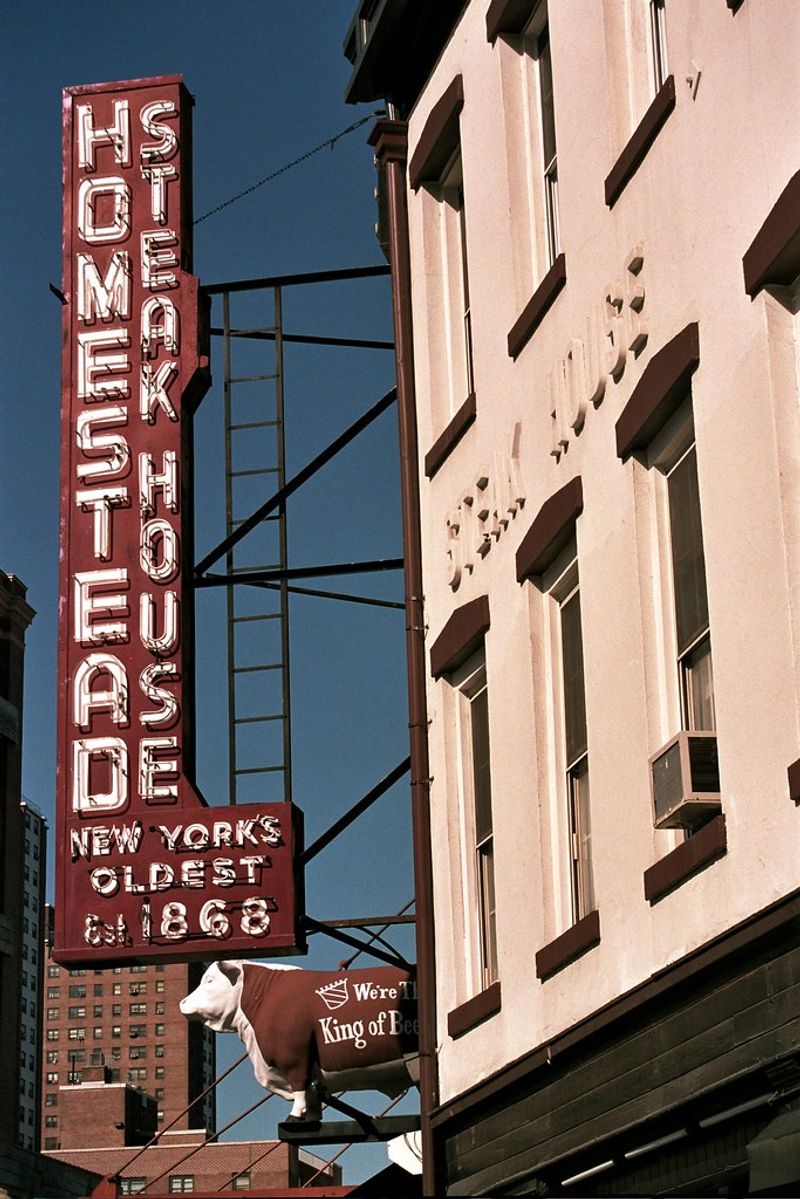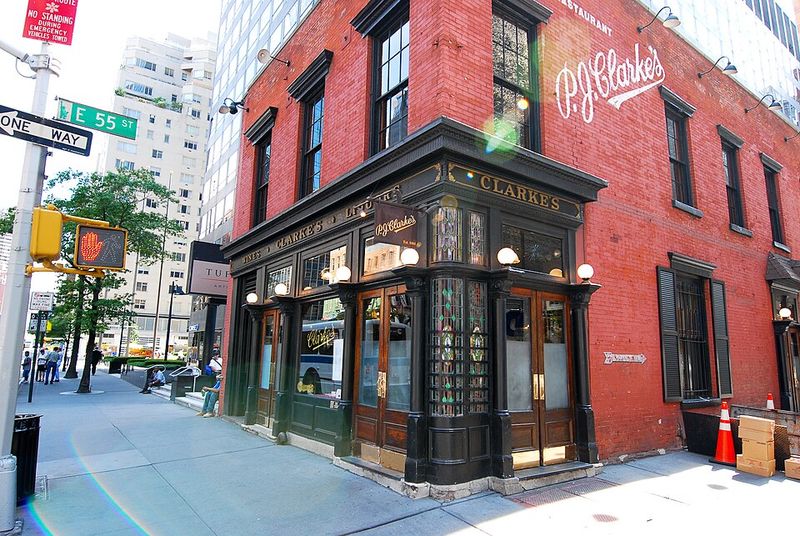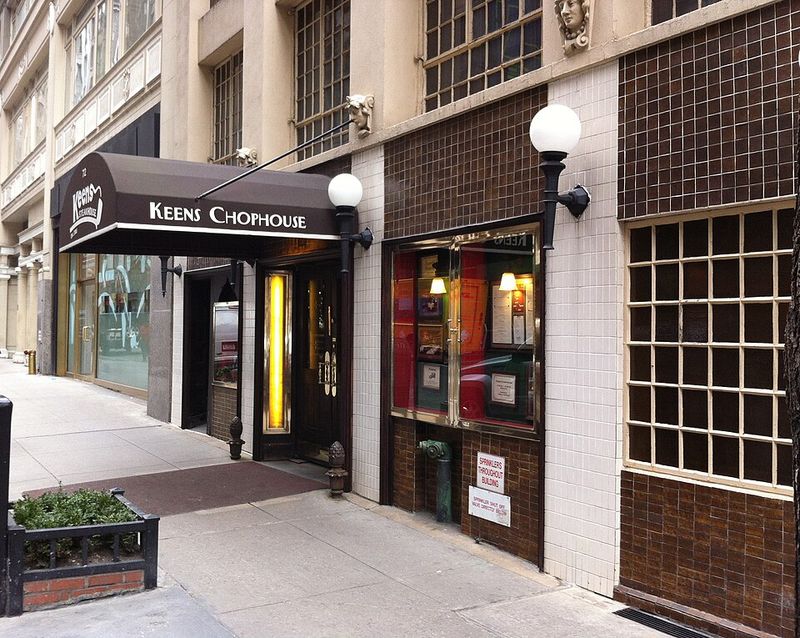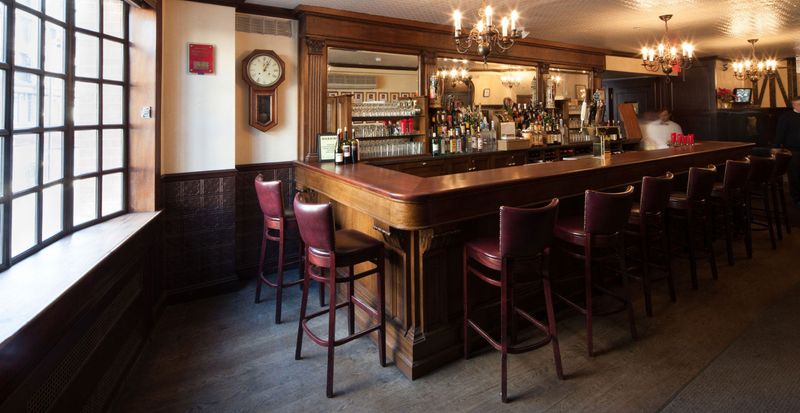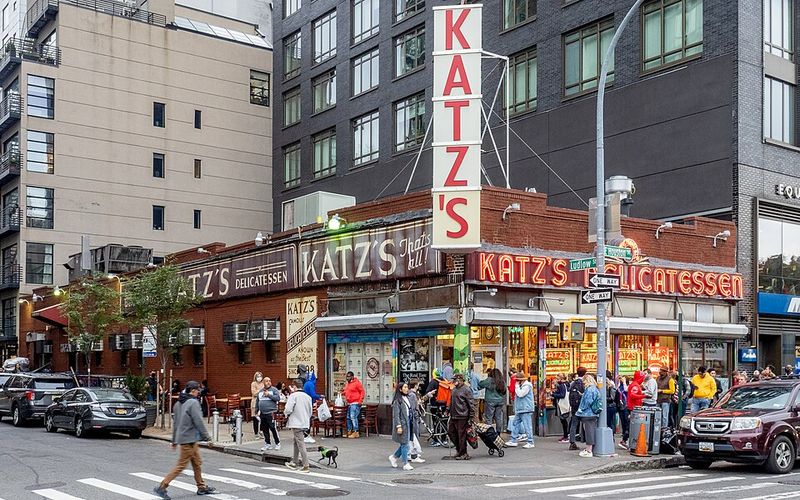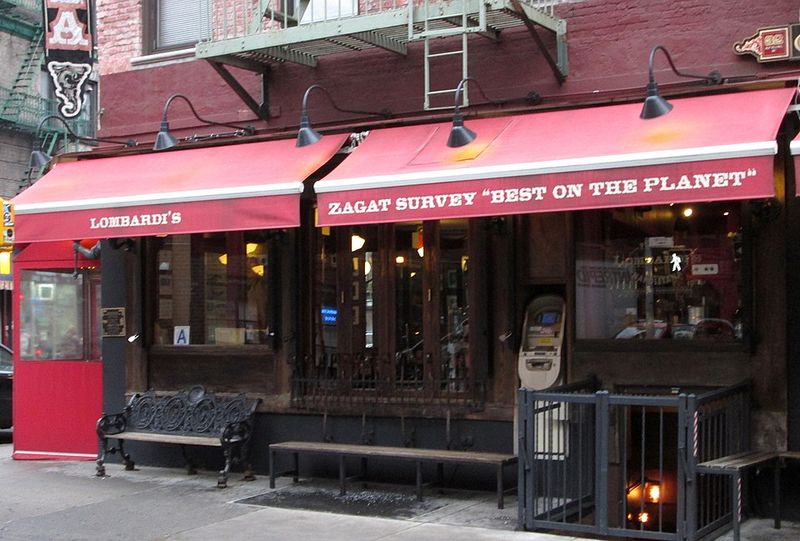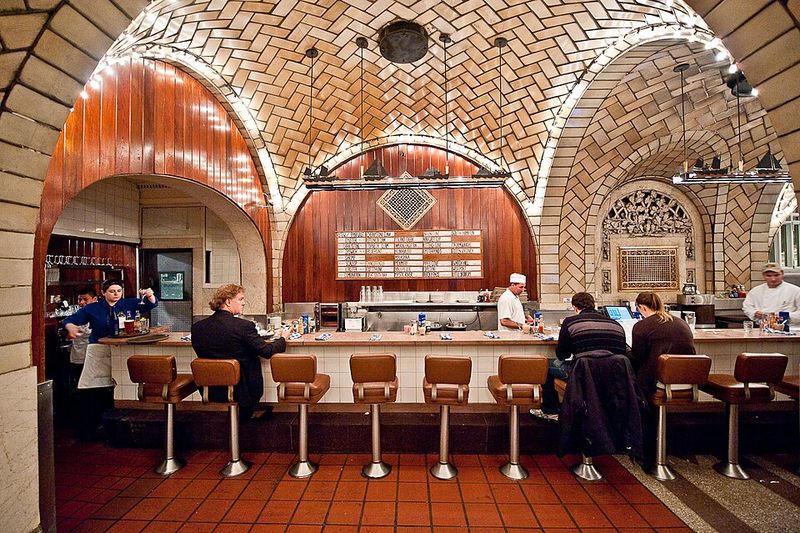New York City’s restaurant scene isn’t just about the latest hot spot or celebrity chef opening. Scattered across the five boroughs are dining rooms that have been feeding New Yorkers for more than a century, each one holding stories of presidents, artists, gangsters, and everyday people who walked through their doors. These ten legendary spots have survived wars, economic crashes, and changing tastes to remain open today. Step inside, and you’re not just getting a meal, you’re tasting living history.
1. Fraunces Tavern (1762) – FiDi
George Washington said goodbye to his officers here in 1783, and you can still grab a pint in the same building. Part working bar, part museum, Fraunces Tavern operates across multiple rooms filled with Revolutionary War artifacts, creaky wooden floors, and oil portraits that watch you eat.
The menu leans into classic pub fare—think fish and chips, shepherd’s pie, and their famous Scotch egg. Tourists flock here for the history, but locals know it’s also a solid spot for an after-work beer.
Walking through feels like time travel. The building itself has been rebuilt and restored, but the tavern’s bones date back to before America was even a country.
2. Delmonico’s (1837) – FiDi
Delmonico’s isn’t just old, it invented the idea of fine dining in America. This is where Baked Alaska was born, where Lobster Newberg got its name, and where the Delmonico steak became a legend. After closing and reopening several times, the restaurant is back at its original corner on Beaver Street.
The dining room drips with old-money elegance: white tablecloths, dark wood, and a menu that honors its 19th-century roots. Reservations are a must, and so is ordering their signature steak.
Eating here feels like stepping into a time when dining out was a grand occasion, not just dinner.
3. Old Homestead Steakhouse (1868) – Meatpacking
Before the Meatpacking District had designer boutiques and rooftop bars, it had slaughterhouses and butchers—and Old Homestead. Claiming the title of America’s oldest continuously operating steakhouse, this place has been serving massive cuts of beef since Ulysses S. Grant was president.
The dining room hasn’t changed much: red leather booths, dim lighting, and portions big enough to share. Their porterhouse for two is the stuff of carnivore dreams.
Old Homestead survived because it stuck to what it does best: high-quality meat, classic sides, and zero pretension. It’s a steakhouse that remembers when the neighborhood actually smelled like steak.
4. P.J. Clarke’s (1884) – Midtown East
When skyscrapers shot up around it, P.J. Clarke’s refused to budge. This Third Avenue saloon has poured drinks through Prohibition (wink wink), the Jazz Age, and every boom and bust since. Regulars have included Frank Sinatra, Buddy Holly, and countless anonymous New Yorkers who just wanted a good burger.
The Cadillac burger is the star here—juicy, perfectly charred, and served in a room that feels frozen in time. Dark wood, tin ceilings, and a bar that’s seen everything.
Clarke’s has that rare mix of being both a tourist destination and a genuine neighborhood joint.
5. Keens Steakhouse (1885) – Garment District
Look up when you walk into Keens, and you’ll see more than 90,000 clay pipes hanging from the ceiling. Back in the day, regular customers stored their personal pipes here between visits—a tradition that turned into one of the city’s oddest and most impressive collections.
The menu is all about the mutton chop, though it’s actually lamb these days. It’s thick, juicy, and arrives on a plate that could double as a serving platter.
Keens feels like a gentleman’s club from another era, complete with dark wood, oil paintings, and waiters who’ve been here long enough to remember when smoking was still allowed.
6. Peter Luger Steak House (1887) – Williamsburg, Brooklyn
Peter Luger doesn’t take credit cards in the dining room. Cash, debit, or the house charge card only. That policy alone tells you everything about this place: it does things its way and always has.
The porterhouse is dry-aged in-house and arrives sizzling on a plate, already sliced and swimming in butter. There’s no menu to speak of—you’re here for steak, and they know it.
Service is brusque, the décor is bare-bones, and reservations are tough to snag. But when you bite into that beef, none of it matters. Luger’s has earned every bit of its legend.
7. Katz’s Delicatessen (1888) – Lower East Side
Katz’s is where Meg Ryan faked that famous scene in When Harry Met Sally, and it’s where generations of New Yorkers have lined up for pastrami piled so high it defies physics. The system here is old-school: you get a ticket at the door, order at the counter, tip the slicer, and guard that ticket with your life.
The pastrami on rye is legendary for a reason—hand-carved, juicy, and served with nothing but mustard and a pickle. Every bite tastes like New York history.
Katz’s is loud, chaotic, and completely authentic. It’s deli culture at its finest.
8. Lombardi’s (1905) – Nolita
America’s first pizzeria—or at least, that’s what Lombardi’s claims, and most historians agree. Gennaro Lombardi started selling pizza here in 1905, back when most Americans had never heard of it. The current Spring Street location keeps the coal-oven tradition alive, baking pies the way they did over a century ago.
Order a classic Margherita and watch the charred, bubbly crust emerge from the ancient oven. It’s simple, delicious, and exactly what pizza should be.
There’s some debate among pizza scholars about Lombardi’s history, but one thing’s certain: this place has been making great pizza longer than almost anyone.
9. Grand Central Oyster Bar (1913) – Midtown East
Beneath Grand Central’s main concourse, under Rafael Guastavino’s famous tiled vaults, commuters and oyster lovers have been meeting for more than a hundred years. The Oyster Bar is as much a part of the terminal as the clock in the main hall.
Sit at the counter and order an oyster pan roast—a creamy, buttery bowl of bivalve heaven that’s been on the menu since day one. The space is cavernous, echoing, and beautiful in a way only old New York can be.
Whether you’re catching a train or just passing through, the Oyster Bar is a destination worth the detour.
